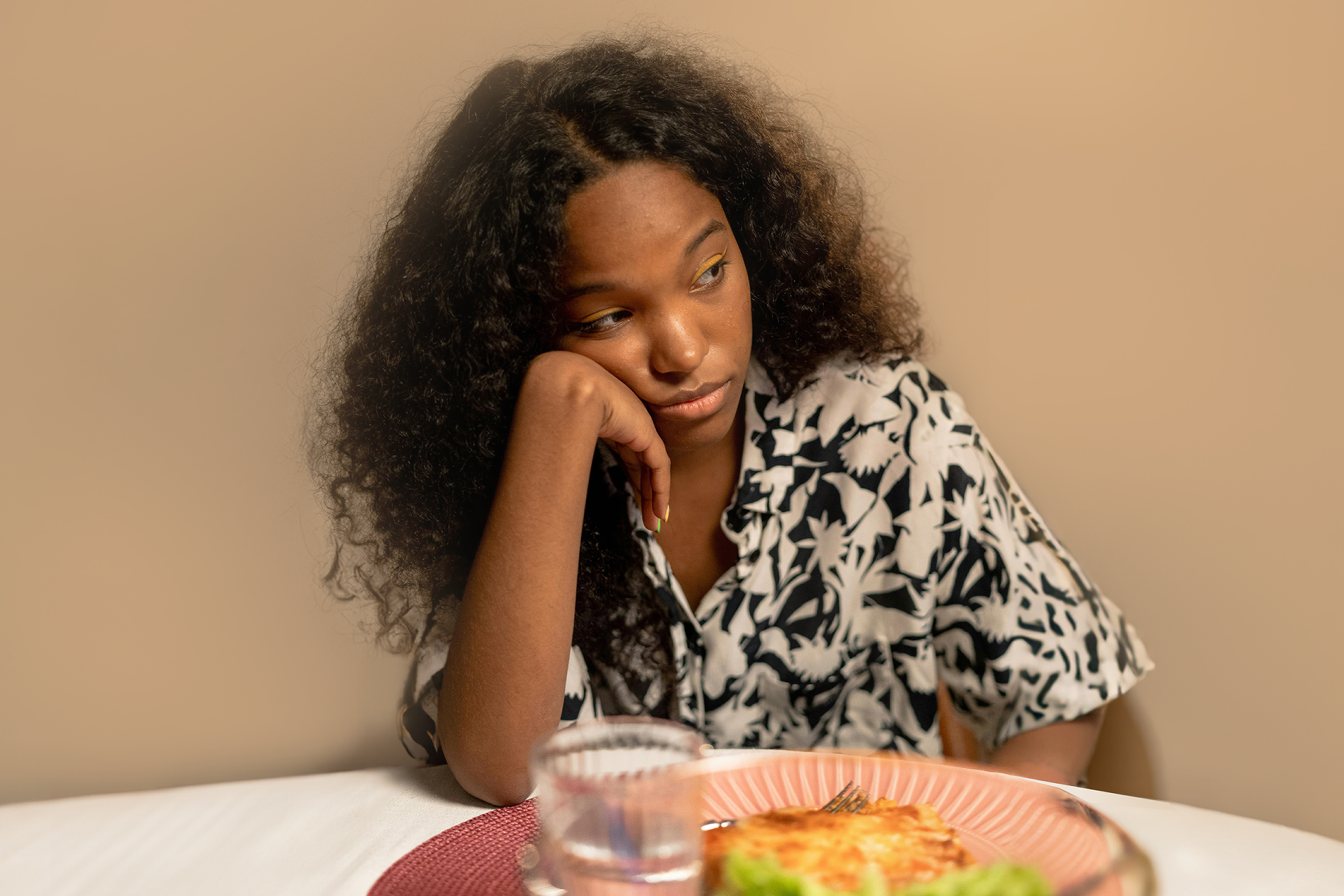


Completing eating disorder treatment can be a joyful experience filled with pride, gratitude, and even relief. But finishing a formal treatment program doesn’t mean all the challenges are behind you, and for many, this monumental accomplishment comes with a range of complicated feelings.
“Transitioning out of treatment brought up a whirlwind of emotions for me,” says Equip Peer Mentor Amaya Evans. “Excitement, doubt, hopefulness, fear. I was excited to live my life in recovery, and at the same time, I was fearful of leaving behind my treatment team and stepping into recovery on my own. Experiencing a lapse in my recovery was something I was very nervous about. But I had to remember that I had many skills and tools to get me back on track.”
Effective, evidence-based treatment is an essential step for those with eating disorders, laying the groundwork for lasting recovery. But treatment programs and protocols are designed to be finite, and recovery can be a longer journey—so what happens after eating disorder treatment ends? Read on for everything you need to know to stay consistent in recovery—or support the recovery of a loved one—on the other side of treatment.
How to know you’re ready for discharge
The prospect of leaving treatment can provoke a complex mix of emotions—making it hard to know whether you or your loved one are actually ready to leave the structured and safe environment that’s become familiar. “While preparing for discharge can be exciting, it can also be a time of fear and apprehension,” says Equip Therapist Lead Jennifer Simmons. This is understandable and common, but it can also cloud decision-making about when to cease treatment, making it important to know the signs of readiness.
While every patient is unique, Simmons says there are some commonalities that may indicate a patient is ready for program discharge, including:
- Having fewer eating disorder thoughts or behaviors to discuss during sessions
- Having fewer food issues (like restriction or bingeing) arise, and/or quickly being able to acknowledge and correct them without much difficulty when they do
- Having more room for other activities and focusing less on food, as eating has become a regular and habitual part of every day
“If you are noticing you have less challenges to discuss in sessions with providers, you’re experiencing an overall decrease in eating disorder thoughts, and successfully using skills to cope outside of treatment sessions, these could be great indicators that you’re getting the hang of recovery,” Evans says. “When recovery starts to feel less like something you have to choose at every single meal and more like your default, you might be ready for a lower level of care.”
Transitioning back to “normal” life
Simmons says she frequently observes patients or their loved ones feeling nervous to leave the watchful eyes of their treatment teams, even after making significant recovery progress. “Sometimes transitioning back to normal life after treatment can feel challenging for both the patient and the family,” she says. “The family might struggle with not having as many treatment sessions where the providers are checking on progress, they might feel that they are unsure how to keep up the patient's success, or the parents might feel scared about a relapse and what to do,” she says.
Finding outpatient providers
One thing that can ease these anxieties—and an integral part of transition from formal treatment back to “normal” life—is finding an outpatient support team. According to Simmons, this may involve having your program treatment team find appropriate outpatient providers and help patients get set up with initial appointments.
“What I tell most patients and parents is that support continues!” she says. “While it might not be the same treatment team or the same amount of sessions, the patient can expect eating disorder-informed outpatient providers happy to continue to support them. This might include an eating disorder therapist, dietician, and medical providers. The hope would be that the patient is seeing the outpatient provider regularly for a week or two before discharge.”
Creating a relapse prevention plan
While lasting recovery is entirely possible, eating disorders have a relatively high relapse rate, with research showing that between 35% and 41% of people experience a relapse within 18 months of completing treatment. For this reason, another important component of the discharge process is working with your treatment team to create a solid relapse prevention plan that can be shared with your outpatient team. “If the patient has had family and friends involved in treatment, I usually recommend a joint session before the end of treatment to talk about the relapse plan together, and so the patient can ask for the support that they might need now as the support needed at the end of treatment is usually different than when patient is in treatment,” Simmons says.
Evans says that something she found particularly helpful in her transition out of treatment was having open, honest conversations with her team, and identifying potential relapse triggers. “In my experience, I needed to shape my environment to support my recovery,” she says. “This looked like getting rid of clothes that no longer fit my body, clearing out diet culture from my social media feed, and informing my support system on what I needed from them.” Evans’ experience aligns with Equip’s independent research, which showed that an essential part of post-treatment life is building a recovery-supporting environment that enlists the help of loved ones and helps you push back against external forces that might trigger disordered behaviors.
Reconnecting with others
Transitioning back to non-treatment life may also be challenging for those who feel they’ve grown distant or separate from friends and peers during their recovery journey, but there are strategies to handle this challenge. “Sometimes patients have friends that are aware of treatment, but sometimes they do not and this can create feelings of isolation or loneliness due to being separated from their normal life,” Simmons says. “Usually this is a temporary state, but this is why a great support network is essential in recovery. I would tell patients to lean on their team, their friends, and their family who are aware of what they went through.”
Tips for transitioning out of treatment
While transitioning out of treatment can have its challenges, there are plenty of expert-approved strategies for navigating the path. The tips below can help give you the structure and strategy to make this big transition with confidence.
Maintain a routine. “Structure is essential in keeping to regular eating schedules and meal plans,” Simmons says. “If the structure falls away, the eating disorder is more likely to come back. That doesn't mean unintentionally skipping a snack will cause a relapse, but if meals or snacks are regularly skipped, this is one of the most common ways the eating disorder might show back up.”
Keep coming back to treatment fundamentals. “Practicing and continuing to practice the skills that worked for the patient is incredibly important,” Simmons says. Research has shown that DBT skills (which are a core component of Equip treatment) can be a powerful tool for helping people overcome eating disorder urges.
Set new life goals. “Something that helped me ease back into ‘normal’ life was becoming excited for the experiences I was going to continue having in recovery,” Evans says. “I remember making a recovery bucket list which included everything from trying new cuisines and cooking new recipes to traveling to new places and making memories.”
Communicate clearly with trusted providers. “I tell parents and patients to lean on their support team and ask as many questions as they need to,” Simmons says. “Clear, kind, and open communication is very important!”
Continue cultivating a support network. “Eating disorders thrive in chaos, loneliness, and feeling misunderstood or not understood at all,” Simmons says. “I always tell my parents and patients to talk to each other. Support each other! If it is a difficult meal for the patient, maybe the parent can start to play a game with them at the table to help distract but also show support in continuing to eat. If an adult is struggling, maybe they can call a friend or share a meal with a support person to ensure success.” See tips for sharing your recovery story.
While eating disorder treatment is difficult, Simmons reminds patients and parents that dealing with an eating disorder alone is much harder. “It is okay if you need more support after you leave Equip,” she says. “Eating disorders can be pervasive, and might continue to try to cause chaos for the person dealing with it. If you are worried about yourself or your loved one after treatment, I would suggest an open, honest conversation. Sometimes the best support someone can provide is showing concern. Remember that asking for additional help at any stage is okay.”
- Berends, Tamara et al. “Rate, timing and predictors of relapse in patients with anorexia nervosa following a relapse prevention program: a cohort study.” BMC psychiatry vol. 16,1 316. 8 Sep. 2016, doi:10.1186/s12888-016-1019-y
- Ekern, B. (2016, August 13). Meal Plans & Long Term Eating Disorder Recovery. Eating Disorder Hope. https://www.eatingdisorderhope.com/blog/understanding-meal-plan-eating-disorder-recovery-long-term#:~:text=A%20more%20structured%20meal%20plan
- LaMarre, Andrea et al. “"It's like building a new person": lived experience perspectives on eating disorder recovery processes.” Journal of eating disorders vol. 12,1 96. 8 Jul. 2024, doi:10.1186/s40337-024-01045-5
- Wisniewski, Lucene, and Denise D Ben-Porath. “Dialectical Behavior Therapy and Eating Disorders: The Use of Contingency Management Procedures to Manage Dialectical Dilemmas.” American journal of psychotherapy vol. 69,2 (2015): 129-40. doi:10.1176/appi.psychotherapy.2015.69.2.129







